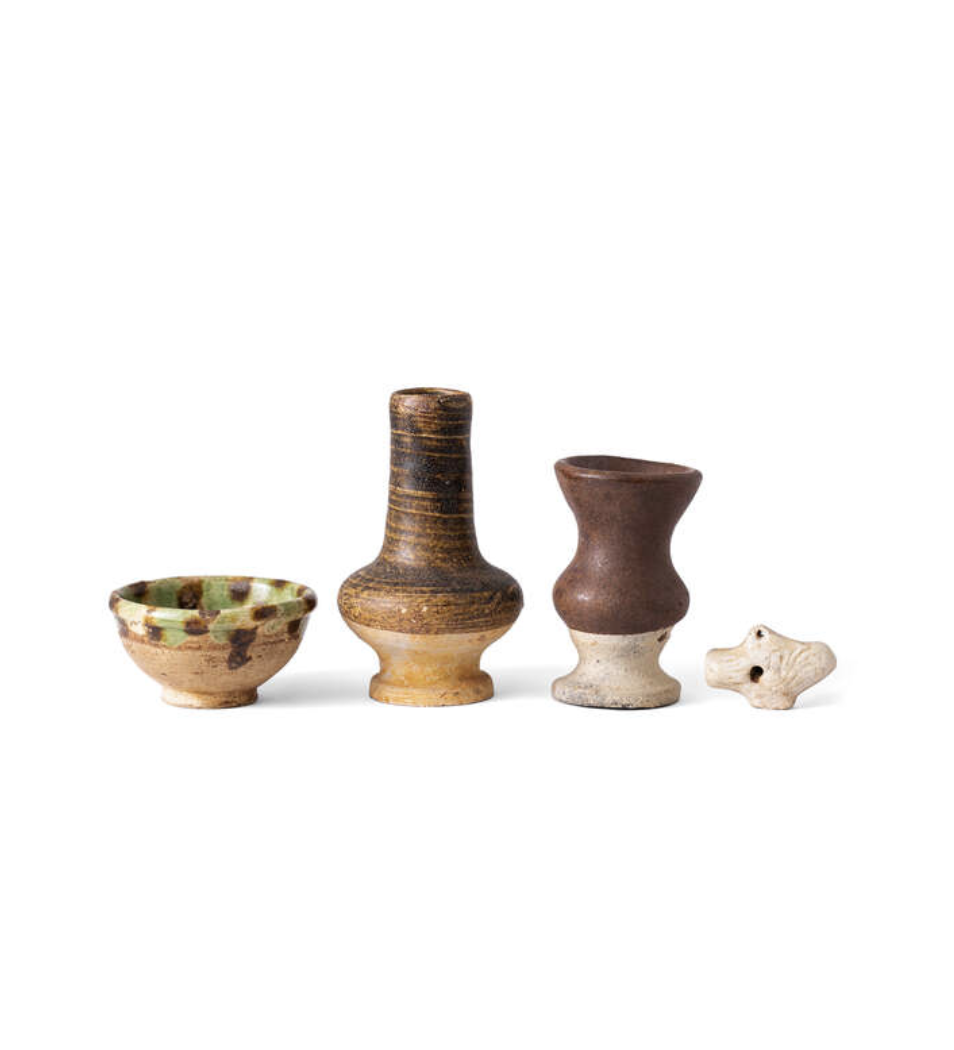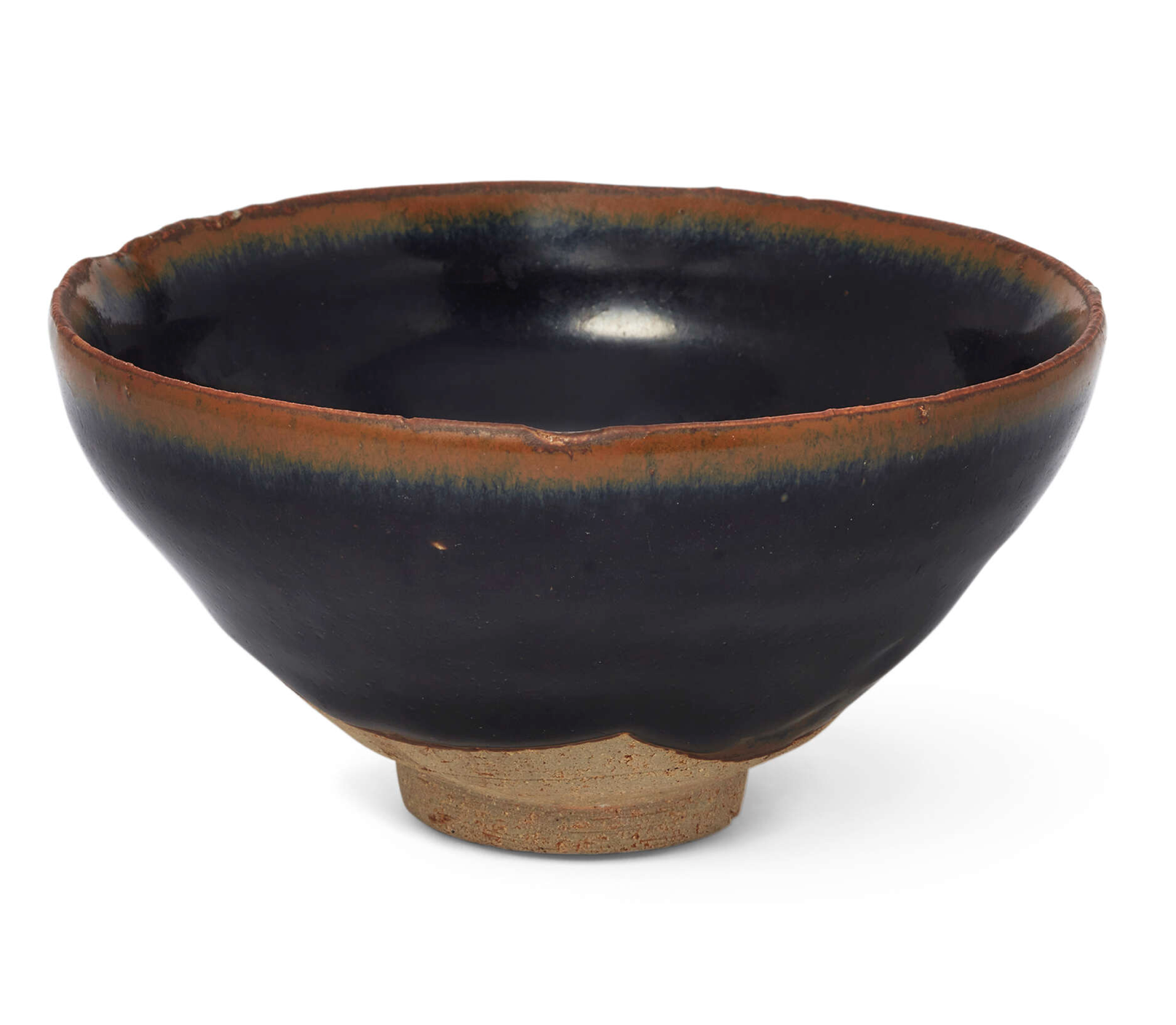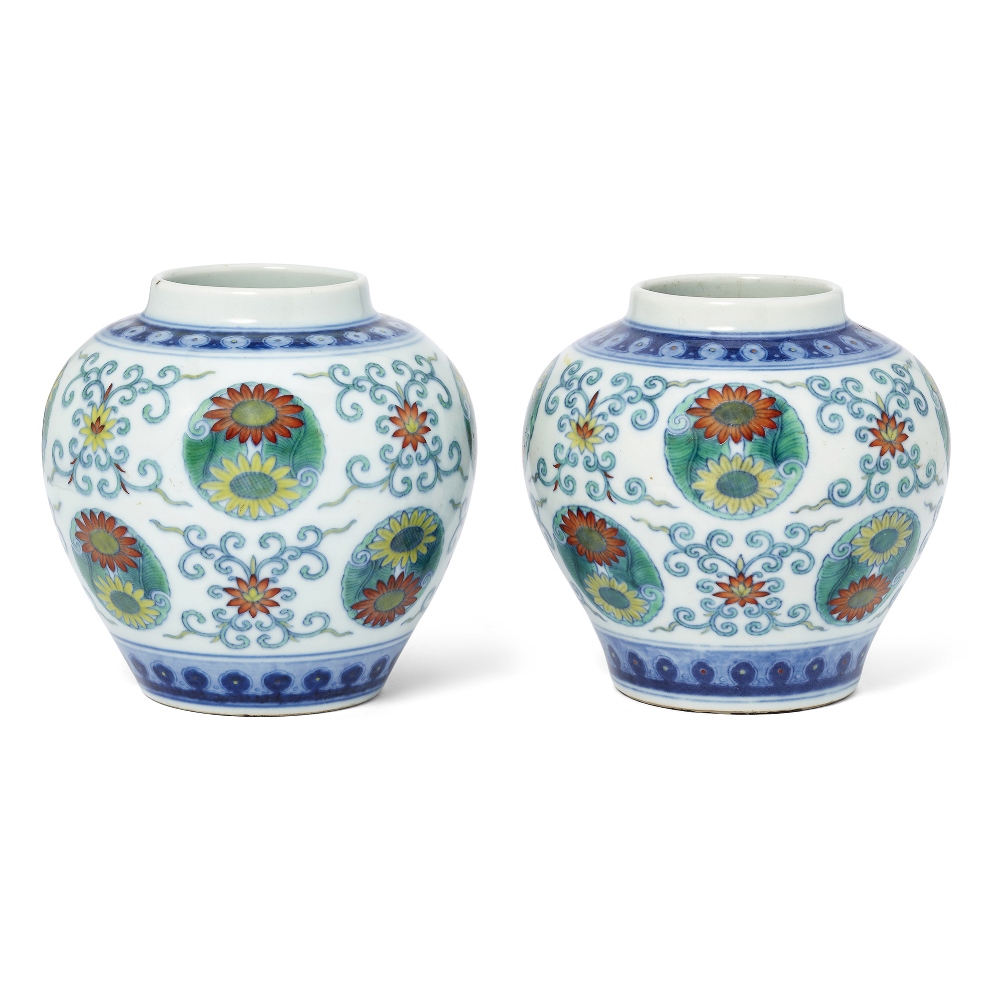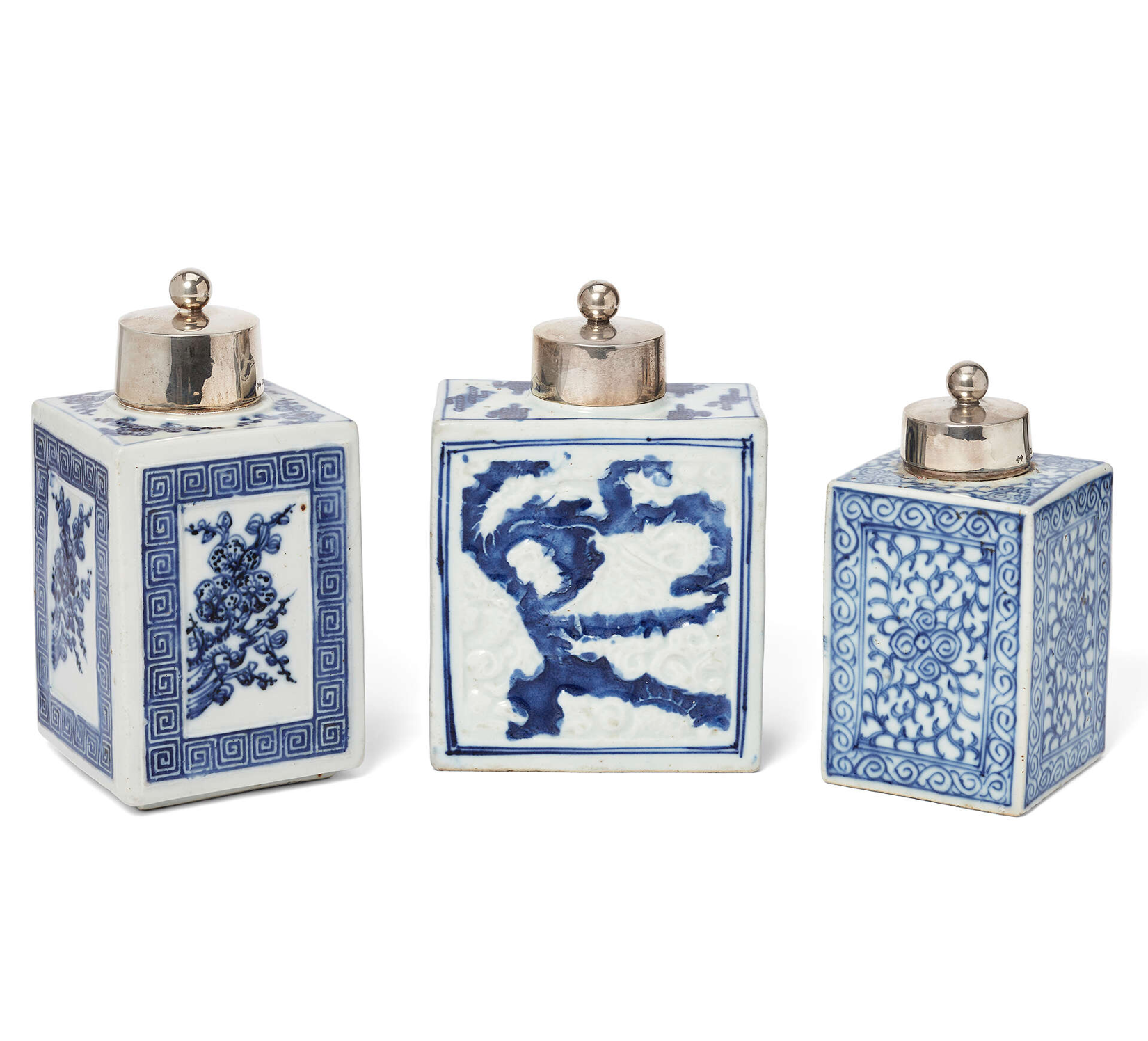The first cup caresses my dry lips and throat.
The second shatters the walls of my lonely sadness
The third searches the dry rivulets of my soul to find the series of five thousand scrolls.
With the fourth, the pain of past injustice vanishes through my pores.
The fifth purifies my flesh and bone.
With the sixth I am in touch with the immortals.
The seventh gives such pleasure I can hardly bear.
The fresh wind blows through my wings,
As I make my way to Penglai the mountain of the immortals.
-Lu Tong 'Seven Bowls of Tea'
As written in the beautiful poem on Lot 303, Chinese tea is closely bound with literature, art, philosophy, and has been perennially sought after and appreciated by Chinese people throughout history. The Chinese tea ceremony has evolved over the centuries to suit changes in tea preparation and preservation methods. The evolutions in form and function of tea wares and drinking vessels across dynastic periods reflect these changes.
Lot 303: A small Chinese blue and white 'Seven Bowls of Tea'
rectangular-section tea caddy, Qing dynasty, 18th century
Tea wares have been found in archaeological sites dating from the Han dynasty (206 BC – 220 AD), but it was during the Tang dynasty (618 AD-906 AD) that tea became firmly established as the national drink of China. As recorded in The Classic of Tea, the first known monograph on tea in the world, Tang dynasty tea masters made compressed tea cakes and prepared tea the form of a soup, adding salt, ginger or other spices to enhance the flavour of the tea.
Lot 298: A group of four Chinese pottery miniatures, Tang dynasty
In the Song dynasty, tea reached its zenith in popularity and sophistication. Tea would be sent to emperors as an imperial tribute. Notable in this period was the development of whisked tea. Compressed tea cakes would be ground into a fine powder, and boiled water would be poured over the powder in the bowl and whisked into a thick froth.
This new method of making tea ensured black-glazed wares to become an essential part of the tea ceremony. As commented by Song dynasty emperor Huizong Song (1082-1135) in his Treatise on Tea, the best colour of the tea soup in his regards is as white as purist jade while the best colour of the vessel should be dark-glazed wares with thin and clear ‘hare’s fur’ strips.
Lot 282: A Chinese Henan black and russet-glazed conical bowl, Song dynasty
The emperor’s taste was widely recognized in the Song dynasty. As writes a Chinese scholar and statesman, in The Record of Tea, a treatise on tea written by imperial command between 1049 and 1053:
‘Tea is white, so black bowls are best. Tea bowls made in Fujian are deep; in colour, they are bluish black with hare’s fur markings. Such bowls are thick-bodied; once warmed they retain their heat, so the tea does not cool so quickly. Tea bowls from other regions are either too thin or too purplish brown, so they are not as good as those from Fujian.’
Lot 285: A Fujian Yulinting black-glazed tea bowl, Southern Song dynasty
Among all the black-glazed wares, the most highly recognized kiln is called Jian kiln, near Jianyang, in northern Fujian province, active from the late Tang dynasty through the Yuan. Due to the popularity of the tea drinking culture in Song dynasty, their repertory of vessel shapes had shrunk to include only tea bowls, which contains three major shapes – conical, trumpet-mouthed, and funnel-shaped.
Lot 284: A rare Chinese Jian ware 'hare's fur' glazed 'tenmoku' bowl, Northern Song dynasty
Lot 265: A Chinese Jian ware 'hares' fur' tea bowl, Southern Song dynasty
Lot 286: A Chinese Jianyao conical 'hare's fur' bowl, Song dynasty
During the Ming dynasty (1368–1644) and continuing into the Qing dynasty (1636–1911), the majority of Chinese people enjoyed tea by pulling water into teapots with loose leaf tea. Therefore the vessels for containing tea leaves in the Ming and Qing dynasties are generally larger than the ones in Tang and Song dynasties. In the exhibition catalogue Empty Vessels, Replenished Minds published by Taibei National Palace Museum, Liao Pao-Show identifies Lot 85, an associated pair of Chinese doucai 'lotus and chrysanthemum' jars, as a pair of Qing dynasty tea caddies. Such doucai are typical of vessels depicted in paintings with other tea-related utensils in court paintings from the Qianlong period (op.cit., p. 179).
Lot 85: An associated pair of Chinese doucai 'lotus and chrysanthemum' jars Qing dynasty
The invention of the teapot is another development of tea wares as a response to the Hongwu Emperor, the founding emperor of the Ming dynasty, mandating that tea should be made in the loose-leaf form rather than as compressed tea cakes. The design of teapots has changed little since Chinese craftsmen first produced a large number of Yixing teapots in the early Ming dynasty. Yixing wares have been promoted by many Chinese tea masters as the best ware for tea drinking because the clay contains minerals which enhance the taste and flavour of the tea.
Lot 310: An unusual Chinese Yixing 'chrysanthemum' teapot and cover, Qing dynasty, 18th century
The Ming and Qing Dynasty were also the periods when tea became an important export commodity for China, increasingly towards Europe, and Chinese teawares became highly sought after outside China.
Lot 307: Three Chinese blue and white tea caddies, Qing dynasty, 18th century
Whilst in the Ming and early Qing dynasty, the drinking of Chinese tea in Europe was an expensive luxury used as much as a medicine as a refreshment, in the late Qing dynasty it became more familiar among the upper classes of continental Europe and America, and silver tea sets with artist’s signatures such as lot 325 were a much admired, rare import.
Lot 325: A Chinese export silver three piece tea set by Wang Hing,
Late Qing dynasty/Republic period, early 20th century
To celebrate and appreciate this long and fascinating tradition of tea drinking culture in China , Roseberys is honoured to present this evolution and dissemination of Chinese tea wares through history in the upcoming Tuesday 16 and Wednesday 17 May sale. We are delighted to be hosting a Chinese tea exhibition and ceremony in central London. We welcome you to join us in appreciating, and discussing the beautiful Chinese tea wares, as well as tasting some traditional Chinese tea, presented by Roseberys’ department cataloguer Marie Ma.















